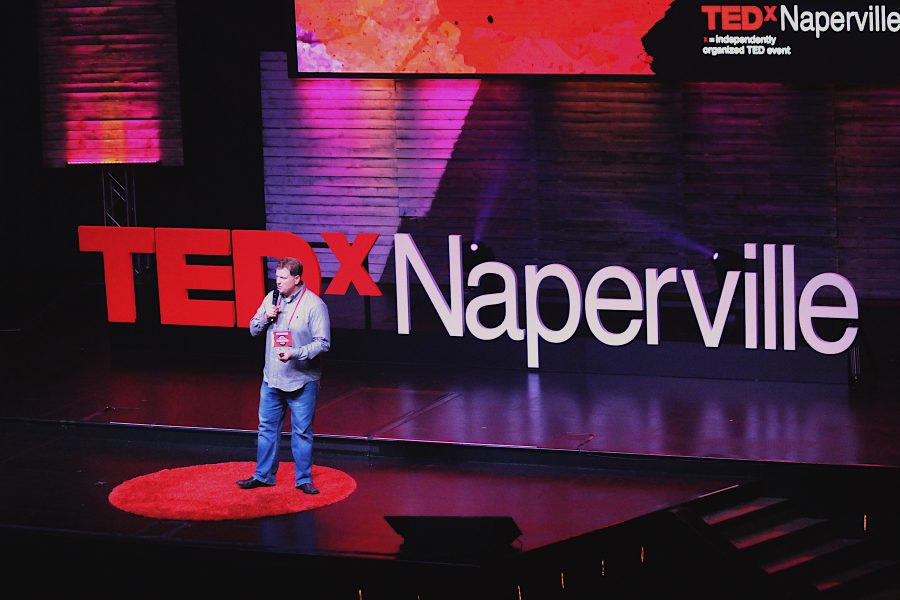Commentary: CT’s Zain Habib attends TEDxNaperville Event
November 16, 2016
The recent TEDxNaperville event blew me away. Walking into the Yellow Box Church in Naperville, I didn’t have very high expectations of the conference. After looking at the speakers of the real TED event, I didn’t think that a suburban, independently-organized event could even compare. But it did. As soon as I checked in, I was directed to a large auditorium at the end of a hallway. I walked in on a Lincoln Junior High teacher giving a speech. John Stumpenhorst, a 6th grade science teacher, was explaining his newest innovation to teaching in front of a large “TedXNaperville” sign in the traditional red and white coloring we’re all used to seeing. The speech lasted no more than fifteen minutes, yet he got his point across very easily. He was explaining his award-winning “Innovation Day” where he lets his students explore their own projects during class once a week. Mr. Stumpenhorst concluded and applause followed immediately, with many in the audience rising to their feet.
The next speaker, Lena Hatchett, came onto stage in an anticipating silence. She stood there for a long moment, with a large picture of a sloppy mud sculpture flickering up on the large screen behind her. She began by saying, “This was made by a blind child.” She continued to give the backstory of the picture. She was with a volunteer group who raised funds for six months in order to get some food for a village in Kenya. While she reveled in her glory, she gave out crayons to the children. One child refused, and she thought nothing of it until they all presented their drawings and that child presented her with a sculpture. She was appalled by the creation that this child made. The most amazing thing is that the child was deaf and mute. Ms. Hatchett’s point of this story is all about expectations. She argued that the world thinks of underdeveloped countries as lesser countries as though the people of Kenya are less than the people of America. But, she said, this thinking is what makes charity inefficient. Her point was that the world must help develop these countries, not dump enormous amounts of food on them and feel good about ourselves. Ms. Hatchett raised some important concerns that the world must come to accept.
After the session was over, we broke for an hour break. The audience was directed to the atrium, where Ms. Hatchett’s latest project, a farmer’s market run by middle schoolers from inner city Chicago was being showcased. The entire atrium was laid out with fresh snacks that were all locally grown. A band was playing in the background and people munched on all the different snacks that the market grew. It was really amazing to see the great work of children that people don’t really pay attention to.
Although I couldn’t stay for the third session, attending this event was really an eye-opening experience. I came in thinking I would take some notes, flash a few pictures and leave. Instead, I learned some interesting lessons and experienced some really great Chicago – grown food.
Following Ms. Hatchett, the session was nearing its close. But before we broke for a half-hour break, six sophomores came to the stage. The MC introduced them as the founders of the Naperville Flag Contest. They talked about how the contest came to fruition, and the obstacles they faced. The flag was introduced among much anticipation, and was met with equally loud applause. Each part of the flag represents something. The six stars all represent the six townships that make up Naperville. The two white stripes represent the two counties (Will and DuPage) that are included within the boundaries of Naperville. The traditional Naperville tree logo is the centerpiece of the flag, and is illuminated in a bright white.








